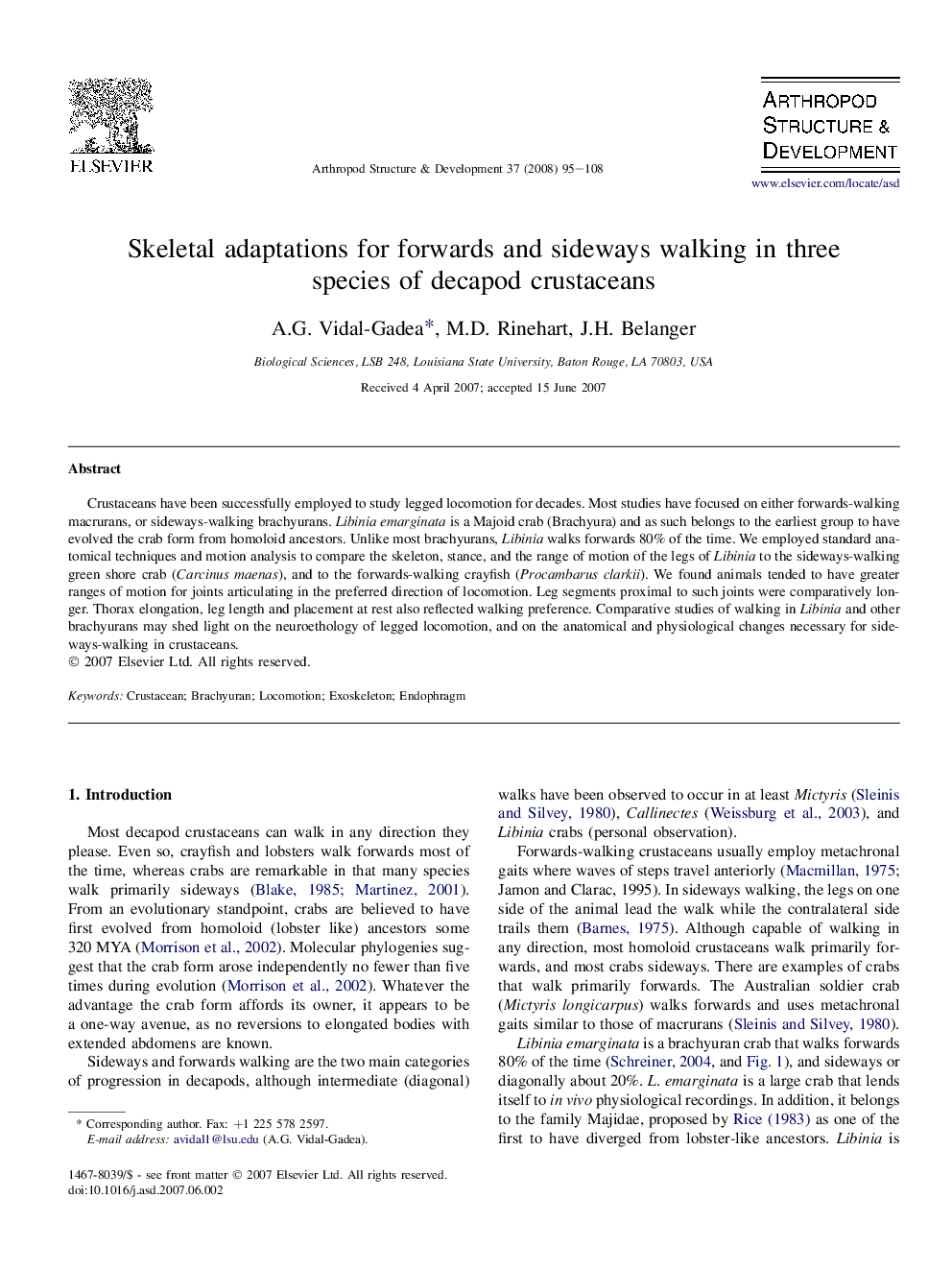| Article ID | Journal | Published Year | Pages | File Type |
|---|---|---|---|---|
| 2779058 | Arthropod Structure & Development | 2008 | 14 Pages |
Crustaceans have been successfully employed to study legged locomotion for decades. Most studies have focused on either forwards-walking macrurans, or sideways-walking brachyurans. Libinia emarginata is a Majoid crab (Brachyura) and as such belongs to the earliest group to have evolved the crab form from homoloid ancestors. Unlike most brachyurans, Libinia walks forwards 80% of the time. We employed standard anatomical techniques and motion analysis to compare the skeleton, stance, and the range of motion of the legs of Libinia to the sideways-walking green shore crab (Carcinus maenas), and to the forwards-walking crayfish (Procambarus clarkii). We found animals tended to have greater ranges of motion for joints articulating in the preferred direction of locomotion. Leg segments proximal to such joints were comparatively longer. Thorax elongation, leg length and placement at rest also reflected walking preference. Comparative studies of walking in Libinia and other brachyurans may shed light on the neuroethology of legged locomotion, and on the anatomical and physiological changes necessary for sideways-walking in crustaceans.
